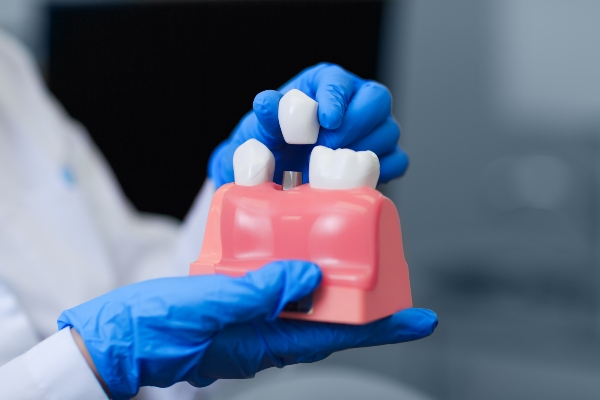What Is the Dental Restoration Process for Tooth Fillings?

Fillings are used to repair decay or minor fractures in the teeth, as part of a Dental Restorations process. A dentist can use dental fillings to restore the appearance and function of damaged teeth. This article focuses on the process of using fillings for tooth restoration.
Consultation and planning for dental restoration
The first stage of a dental filling treatment is to examine the teeth and determine the best treatment option. A dental filling is effective for minor decay and fractures, but in severe cases, other dental restoration options like inlays and onlays, crowns or dental implants might be advisable. The dentist can use a dental probe to check affected areas, and an x-ray scan can provide precise details about the location and extent of the decay.
Many materials are available for filling and sealing a cavity to prevent further damage to the tooth. Examples of filling materials include silver amalgam, glass ionomer, composite resin, porcelain and gold. The right choice depends on the location of the cavity, the patient’s medical history, preference and financial strength.
The filling procedure
The first step during a dental filling is to numb the area near the affected tooth with a local anesthetic. This will help keep the patient comfortable throughout the procedure.
Afterward, the damaged or decayed tooth will be prepared for the dental restoration. The dentist will use a dental hand tool or laser to remove the damaged or decayed area of the tooth. They will use an acid gel to clean the area and eliminate bacteria thoroughly. Then, the filling material will be placed into the cavity.
The dentist will need to isolate the affected tooth to prevent the interference of moisture during the bonding process. Dental adhesive will be applied to the cleaned area and the filling material will be bonded to the tooth. For composite resin, the dentist will harden the filling with a unique UV light. Afterward, the tooth will be polished to a natural sheen.
Dental restoration aftercare
After completing the dental filling procedure, the dentist will discuss with the patient how to prevent decay from developing under or around the dental filling. The instructions will help prevent additional decay, especially in other teeth.
Patients need to adopt good oral hygiene practices such as brushing their teeth with fluoride toothpaste and flossing. The dentist may recommend fluoride mouth rinses for patients with a high risk of cavities. Some patients can benefit from getting dental sealants over their molars to reduce the occurrence of decay.
Follow-up appointments and regular checkups are important to monitor the tooth and filling and for a professional dental cleaning.
Points to note
Dental fillings can last for many years before a replacement is necessary. Habits like teeth grinding may necessitate premature replacement. Once patients detect signs of deterioration, they need to meet with the dentist to have the fillings replaced. Failure to do so can cause additional damage to the tooth, which may require extensive procedures.
In conclusion
The dental restoration process for filling a tooth is straightforward. If you have tooth decay and need dental fillings, contact our dental office today to set up an ap
Request an appointment here: https://metrosmiles.com or call Metro Smiles Dental at (718) 841-9591 for an appointment in our Forest Hills office.
Check out what others are saying about our dental services on Yelp: Dental Restorations in Forest Hills, NY.
Recent Posts
For patients who have damaged or decaying teeth, dental restorations may be a necessity. Dentists use a variety of restorative procedures to protect and repair the structural integrity of an individual's teeth. Some of the most common restoration procedures may include dentures, crowns, and fillings.No individual should suffer from severe tooth pain or discomfort. Decaying…
Numerous things can interfere with a good smile. Whether it is a missing, cracked, chipped, damaged, or decayed tooth, dental restorations help improve how you look, prevent future dental issues, and improve the function of your teeth and mouth. Depending on the type and severity of the issue, there are various restoration procedures available.Some people…
Dental restorations can improve overall health by decreasing the chances of infection, decay, and issues caused by broken or misaligned teeth. These treatments range from removing teeth, replacing tooth structures that have decayed, and correcting the patient’s overall bite to improving eating and drinking.A restoration may be performed for cosmetic or health-related reasons, but even…
Dental restorations have been used for thousands of years. In fact, a 2012 article published by The New York Times details the discovery of a 6,500-year-old human jawbone. Considered the earliest evidence of dental fillings, it had beeswax in one tooth, which researchers believe was to ease the pain of a crack. These days, restorations…


